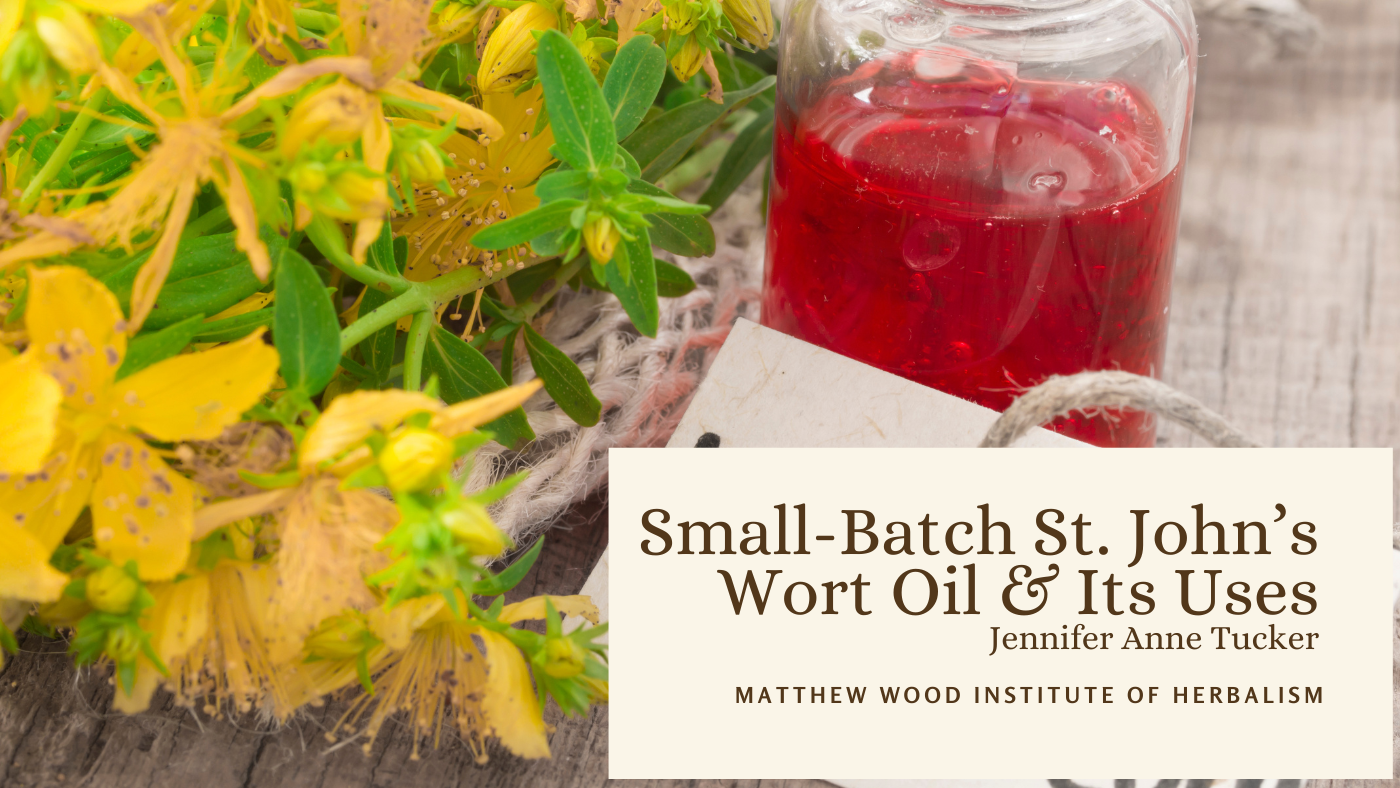Jump to Recipe
The oil made from the flowers is one of the most often used herbal remedy in my home apothecary. For myself and for others many miracles come from the oil. To find the plant in the wild and in the garden the alchemy of sunlight and the fresh flowers in olive oil transforming into a deeply red color always is magical.
In the early days of my herbal “budding” a vintage book of herbs by Juliette de Bairacli Levy was my herbal inspiration and one of the few books in my library in the late 1960’s. In her external use of St. John’s oil from wounds to rashes in including very serious diseases “including infectious ailments, such as scarlet fever and typhus” and she further writes “The fresh flowers steeped in sun or fire-warmed olive oil, yield the famed oil of St. John’s wort, much used by the crusader knights.”
Some of my experiences EXTERNALLY with the oil
- Whiplash after car accident wear a SJW oil-soaked bandana around the neck to prevent the spasms of pain and repair any nerve damage.
- Spine pain, scoliosis aches, muscle strain I combine SJW oil with Mullein Verbascum thapsus as a massage or to wear an oil pad.
- Knee, joint pain, post-surgical swelling, pain and scar prevention after knee, shoulder or hip replacements. SJW oil massage or oil pad on or near the surgical site.
- Shingles nerve pain and blisters.
For more severe pain in the above conditions anywhere on the body, some combinations are SJW oil with Arnica oil, or with Lobelia inflata oil.
These are all home-made oils from fresh plants.
- Sunburn, scalds, and deep burn pain apply SJW oil liberally or wear oil-soaked gauze pad to protect and cover burn and prevents infection and pain.
- Hospice care of patient and caregiver, family in attendance, anoint feet, hands, heart, forehead and is truly a blessing when adding Rose oil or Rose Essential oil to SJW oil.
- Protect children while sleeping. Massage into feet or abdomen, chest or spine.
- An MS patient daily use on the spine.
INTERNAL water-based infusions or alcohol extracted tinctures
NOTE: not to be used internally if on pharmaceuticals or antiviral medications. Not to be used long-term internally.
- My “dark days” tincture and for recovery after shingles infections to prevent relapse in combination with Lemon Balm tea. I find it very useful for viral infection depression.
- Menopausal and hormonal mood swings, restlessness and fleeting anxiety over a known upcoming challenging event.
I’m sure there is more to discover, this is just a quick inventory of my uses over the years. Share yours!! Happy Solstice and may you find abundant St. John Flowers!
Sun-Infused, Small Batch St. John's Wort Oil
**Permissions**
You’re welcome to share this blog post on social media and link back to it—please do! All images, photos, and written content are the creative property of the author and used with permission. If you’d like to reproduce or distribute any part of this content beyond social sharing, written permission is required.
**Disclaimer**
The information provided in this digital content is for educational purposes only and is not intended as medical advice, diagnosis, or treatment. It should not be used as a substitute for consultation with a qualified healthcare professional. Always consult a licensed healthcare provider before making any changes to your health regimen, especially if you are pregnant, nursing, taking medications, or have a diagnosed medical condition.
Matthew Wood, the Matthew Wood Institute of Herbalism, Earth to Stars Productions, and their employees, guests, affiliates, and collaborators assume no liability for the use or misuse of any information presented. The application of any material is solely the responsibility of the reader or participant.
Any descriptions of herbal or natural products, remedies, or techniques are for informational purposes only. These statements have not been evaluated by the Food and Drug Administration (FDA). This content is not intended to diagnose, treat, cure, or prevent any disease.
Participation in educational programs or use of this material does not confer certification, licensure, or professional qualification in herbal medicine or any healthcare field. Results or experiences described may vary and are not guaranteed.
This disclaimer shall be governed by and construed in accordance with the laws of Minnesota, USA, without regard to conflict of law principles.


